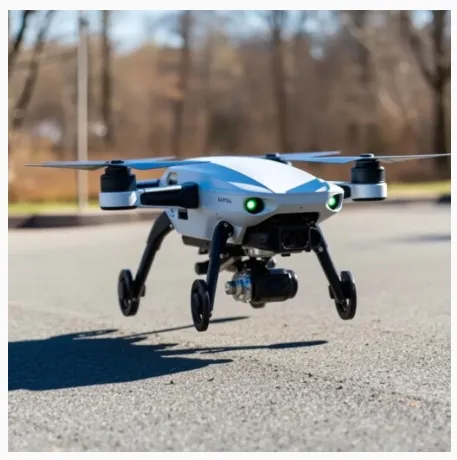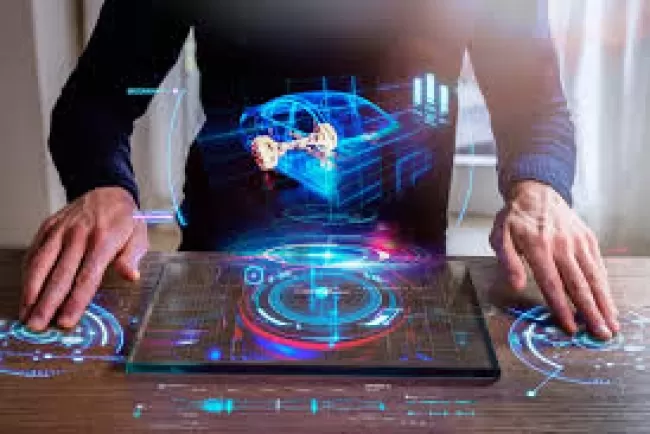Cutting-Edge Tech Trends in 2024: From Generative AI and Quantum Computing to Sustainable Innovations and Brain-Computer Interfaces
In 2024, technology continues to evolve at an unprecedented pace, with major breakthroughs across various fields. Generative AI and advanced language models like GPT-4 and GPT-5 are revolutionizing content creation and automation, while quantum computing is edging closer to practical applications in cryptography and optimization. Edge computing and 5G/6G technologies are enhancing real-time data processing, empowering industries such as autonomous vehicles and smart cities. Additionally, innovations in AI-driven cybersecurity, blockchain, and decentralized finance are reshaping digital ecosystems. On the sustainability front, green computing and carbon-neutral tech solutions are reducing environmental footprints, while biotechnologies like CRISPR and brain-computer interfaces promise transformative impacts in medicine and human-machine interaction. As these technologies converge, they are paving the way for a more connected, intelligent, and sustainable future.
1. Generative AI & Large Language Models (LLMs)
- Advancements: Newer versions of models like GPT-4, GPT-5, and beyond have dramatically improved in understanding and generating more contextually appropriate, nuanced, and creative content.
- Applications: From AI-driven content creation (e.g., writing, art, music) to chatbots and virtual assistants in enterprise settings, generative AI is revolutionizing productivity, personalization, and automation.
- Fine-tuning and Customization: Techniques such as prompt engineering and fine-tuning allow businesses to tailor LLMs for specific tasks like customer service, legal research, and content generation.
2. Quantum Computing
- Quantum Algorithms: Developments in quantum algorithms, such as Shor’s algorithm for factoring large numbers and Grover's search algorithm, have potential to radically enhance fields like cryptography, optimization, and material science.
- Quantum Supremacy: Some companies, like Google and IBM, are advancing towards practical quantum computers, though we are still in the early stages of this technology.
- Quantum-Ready Encryption: Techniques like post-quantum cryptography are emerging to protect data from the future threats posed by quantum computing.
3. Edge Computing & 5G/6G Integration
- Edge AI: With the explosion of IoT devices, edge computing (processing data closer to where it’s generated rather than in a central cloud server) is becoming increasingly important for real-time applications like autonomous vehicles and industrial automation.
- 5G/6G Networks: The rollout of 5G and the development of 6G technology promise ultra-low latency, increased data transfer speeds, and massive connectivity, enabling advancements in augmented reality (AR), VR, and IoT systems.
4. Artificial General Intelligence (AGI)
- Toward AGI: Though true AGI (intelligence that can perform any intellectual task that a human can) is still a long-term goal, new research is working on combining narrow AI systems to create more generalized problem-solving abilities.
- Self-Supervised Learning: Techniques that allow AI to learn from unlabeled data, mimicking human learning processes, are gaining traction and could be a major step toward AGI.
5. Blockchain and Decentralized Finance (DeFi)
- Smart Contracts & NFTs: The use of blockchain for smart contracts (self-executing contracts) and NFTs (non-fungible tokens) continues to grow, enabling decentralized applications (dApps) in various sectors including art, gaming, and real estate.
- Layer-2 Solutions: To improve blockchain scalability, new Layer-2 solutions (like Optimistic Rollups and ZK-Rollups) are being developed to process transactions off-chain while ensuring the security of the main blockchain.
6. AI-Driven Cybersecurity
- Zero Trust Architecture (ZTA): With an increase in cyber threats, zero trust security frameworks, which assume no implicit trust in any device or user, are becoming more prominent in securing networks.
- AI for Threat Detection: AI techniques, including behavioral analytics and machine learning, are increasingly used to detect anomalies and potential security breaches in real-time, making proactive security possible.
7. Extended Reality (XR) - AR/VR/MR
- Mixed Reality (MR): Technologies blending virtual and augmented realities, like Microsoft’s HoloLens and Apple Vision Pro, are creating immersive experiences for both entertainment and enterprise applications.
- Metaverse Development: Virtual worlds are becoming more sophisticated, incorporating VR and AR for entertainment, work, and social interaction. Companies are exploring XR tools for virtual meetings, remote collaboration, and digital twin simulations.
8. Neural Interfaces & Brain-Computer Interfaces (BCIs)
- BCIs: Advancements in brain-computer interfaces, such as Neuralink and Synchron, allow direct communication between the brain and digital systems, offering potential for medical applications like treating paralysis, controlling prosthetics, and enhancing cognitive capabilities.
- Non-Invasive BCIs: These are becoming less intrusive, improving the comfort and practicality of devices that can read brain signals.
9. Autonomous Vehicles & Drones
- AI-Powered Autonomy: Self-driving technologies for cars, trucks, and drones are maturing with better sensors, AI algorithms, and safety protocols.
- Regulations and Infrastructure: As autonomous vehicles become more reliable, regulations and infrastructures are being developed to ensure their safe integration into society.
- Swarming Drones: Drones are being used in coordinated groups, performing tasks like search-and-rescue missions, agriculture monitoring, and logistics.
10. Sustainable Tech & Green Computing
- Carbon-Neutral Data Centers: Companies are leveraging renewable energy sources and energy-efficient hardware to reduce the environmental impact of their computing infrastructure.
- Carbon Capture and Renewable Energy Innovations: Technologies like direct air capture and green hydrogen are being developed to reduce industrial carbon footprints.
- Sustainable Materials in Tech: The development of biodegradable electronics and eco-friendly manufacturing processes is a key focus of the sustainability movement in technology.
11. Biotechnology & CRISPR
- Gene Editing: Techniques like CRISPR-Cas9 are transforming medicine and agriculture by enabling precise editing of DNA, which could lead to treatments for genetic diseases, cancer therapies, and improvements in crop yields.
- Synthetic Biology: Combining biology and engineering, synthetic biology allows the creation of new organisms or biological parts to solve problems in health, energy, and environmental sustainability.
12. Natural Language Processing (NLP) Advancements
- Multimodal NLP: Techniques that combine vision, text, and speech (e.g., GPT-4's multimodal capabilities) are expanding the ways in which AI systems can understand and interact with the world.
- Multilingual Models: Large language models are now becoming more adept at handling multiple languages, even under-resourced languages, making global communication and translation more seamless.
****Thank you guys for visiting this page and viewing this post****
This your Ajay, signing off
What's Your Reaction?






















